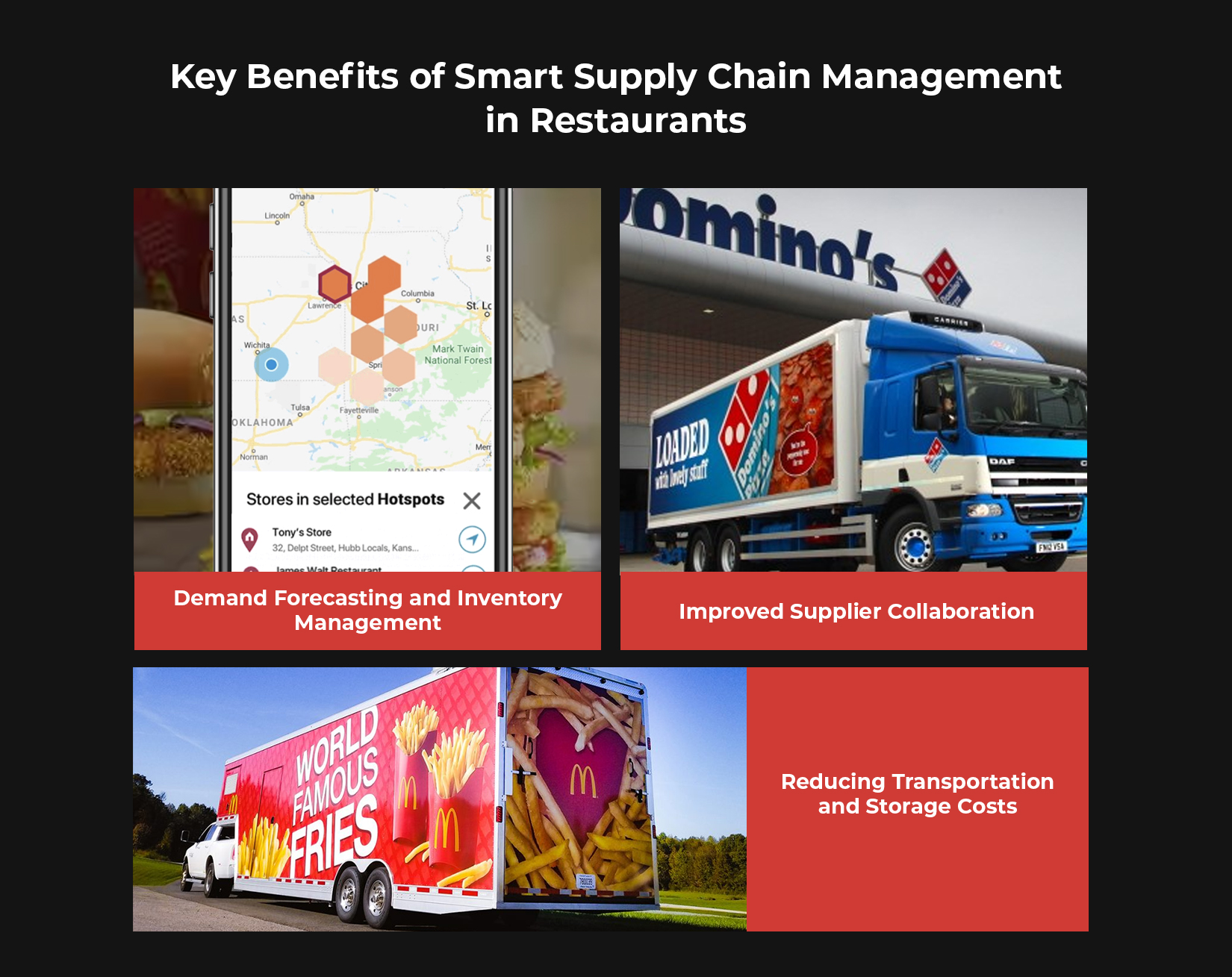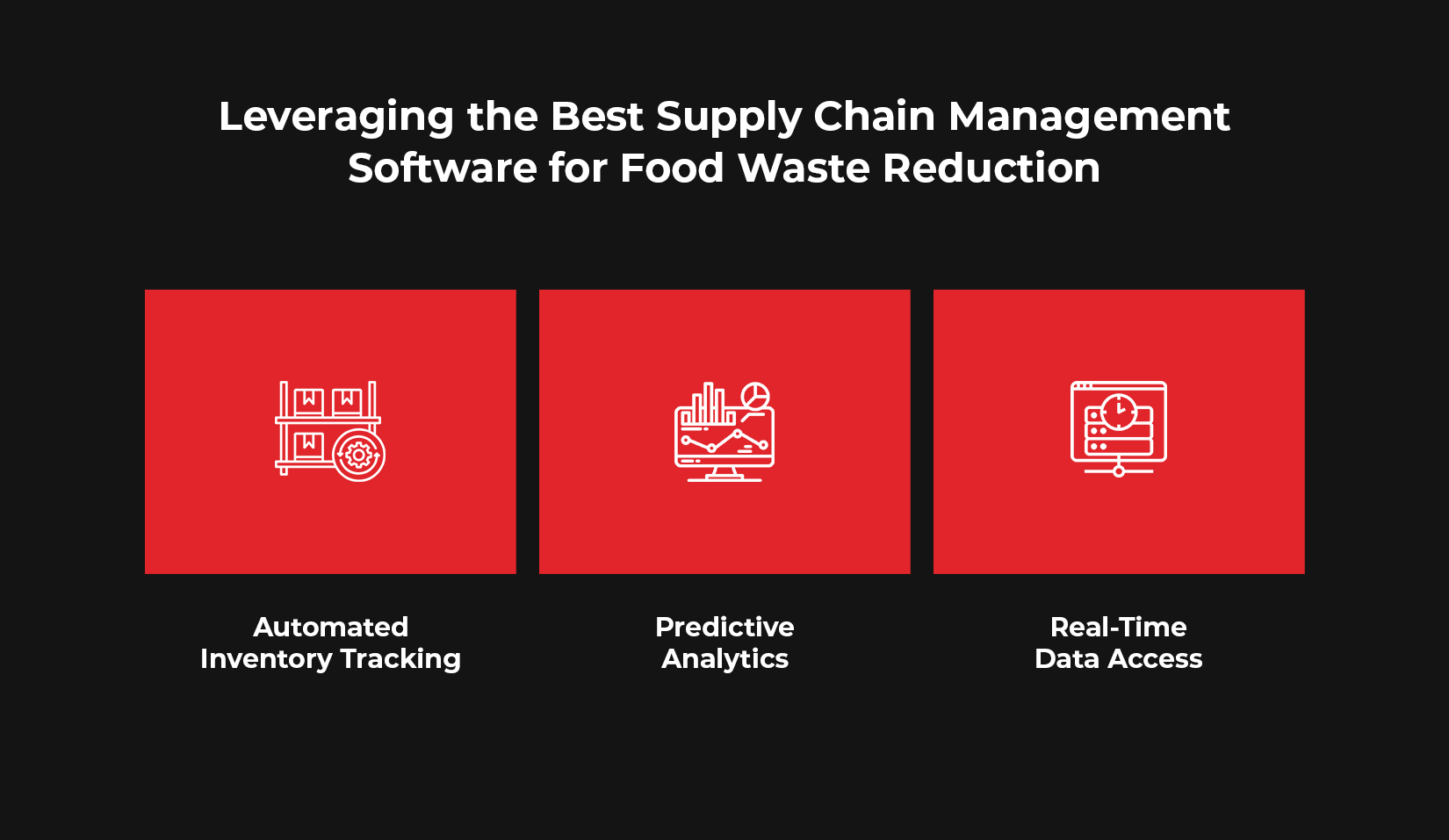
Smart Supply Chain Management Can Reduce Food Waste and Improve Margins in Your Restaurant
Efficient supply chain management has become a crucial factor for restaurants ooking to reduce food waste and increase profit margins. A streamlined and data-driven supply chain management system helps restaurants balance supply and demand. It minimizes losses due to spoilage, inaccurate ordering, and inefficient resource allocation. Incorporating supply chain management technology not only supports sustainability efforts by reducing waste but also leads to substantial savings and improved profit margins.
In this blog, we’ll explore how supply chain management is a game-changer for modern restaurants. What it can offer, and how choosing the best supply chain management software can drive down waste and boost profits.
The Growing Problem of Food Waste in the Restaurant Industry
In the United States alone, around 40% of all food produced goes to waste, amounting to an annual loss of $165 Billion. Food waste in restaurants accounts for a large portion of this. The industry loses an estimated $25 billion annually due to spoilage, preparation waste, and customer plate waste. This waste was not only a loss of resources but also a missed opportunity for better profit margins. With rising food costs, restaurants must take a proactive stance on food waste to remain profitable.
Supply Chain Management as a Solution to Food Waste
Adopting an effective supply chain management system allows restaurants to avoid common pitfalls that contribute to waste. Through better inventory management, optimized purchasing, and predictive analytics, supply chain solutions enable restaurants to only order what is needed. This ensures that orders are made at the right time and in the right quantities. By ensuring that ingredients are fresh and used efficiently, restaurants can reduce waste and improve their environmental footprint.
Key Benefits of Smart Supply Chain Management in Restaurants

1. Demand Forecasting and Inventory Management:
One of the core functions of supply chain management software is inventory management. By predicting demand, restaurants can optimize the order processing and understocking. Modern supply chain management technology includes tools that allow restaurants to accurately predict future demand. This is done by analyzing past trends, seasonality and even local events that may impact customer footfall.
For example, integrating best supply chain management software with point-of-sale (POS) systems enables real-time tracking of sales, which can inform ordering decisions. Data-driven inventory management can reduce food spoilage by up to 10%, freeing up funds that would otherwise go toward lost inventory.
2. Improved Supplier Collaboration:
Strong relationships with suppliers are essential for maintaining an efficient supply chain. A supply chain management solution offers tools for better collaboration with suppliers including automated reordering and supplier performance tracking. It also provides transparent communication channels to streamline interactions. By working closely with suppliers, restaurants can negotiate better terms, plan for future demand and ensure that deliveries are timely and of high quality.
Supply chain technology can even facilitate “just-in-time” ordering, a system that reduces holding costs by arranging for supplies to arrive precisely when needed. This not only minimizes waste but also improves cash flow, a crucial factor in maintaining profitability.
3. Reducing Transportation and Storage Costs:
Supply chain management doesn’t stop at ordering and inventory—it extends to transportation and logistics, where significant cost savings can be achieved. For example, some supply chain management systems help optimize delivery schedules and routes, reducing fuel costs and environmental impact. By consolidating orders or choosing local suppliers, restaurants can decrease transport times and preserve the freshness of ingredients.
Using supply chain management software to streamline transportation also minimizes the risk of spoilage due to extended shipping times. Studies have shown that using optimized logistics can reduce a restaurant’s transportation costs by up to 15%.
Leveraging the Best Supply Chain Management Software for Food Waste Reduction

With advances in supply chain management technology, restaurants can benefit from automation and enhanced tracking capabilities. The best supply chain management software integrates various processes, allowing for seamless communication between front and back of house operations. Here are some features to consider when choosing a supply chain solution:
1. Automated Inventory Tracking:
Modern software can track inventory levels automatically, alerting managers to reorder items as they run low. This feature prevents over-purchasing and stock-outs.
2. Predictive Analytics:
By analyzing historical data, supply chain software can forecast demand patterns. This helps managers plan menu offerings and ingredient purchases to maximize profitability.
3. Real-Time Data Access:
Cloud-based supply chain management systems offer real-time data access from any device, making it easier to monitor and adjust operations as needed.
In addition to reducing food waste, using the supply chain management software allows restaurants to operate more sustainably and attract customers who are increasingly concerned with environmental responsibility.
How Supply Chain Management Software Drives Profit Margins
Aside from reducing waste, supply chain management solutions contribute directly to the bottom line. A study by the National Restaurant Association found that improving supply chain practices can increase a restaurant’s profit margin by 2% to 5%. By cutting down on food waste and optimizing inventory, restaurants can reallocate funds toward growth initiatives, such as marketing or customer service improvements.
With real-time insights provided by supply chain management systems, restaurants can also adjust prices and menu items based on ingredient availability and costs. This flexibility allows managers to adapt quickly to fluctuations in food prices, maintaining stable profit margins even in a volatile market.
Future of Supply Chain Management in Restaurant Industry
As consumer preferences shift and technology advances, the demand for supply chain management solutions will only grow. Many restaurants are already investing in digital tools to monitor their supply chains, and this trend is expected to continue. By implementing supply chain management technology, restaurants can keep up with industry standards and meet the growing demand for sustainable practices.
Additionally, as regulations around food waste and sustainability tighten, having a reliable supply chain management system will help restaurants comply with standards while reducing waste. Forward-thinking restaurants are already seeing the benefits, with 61% of restaurateurs who use supply chain technology reporting higher operational efficiency.
Choosing the Right Supply Chain Management Software for Your Restaurant
Selecting the best supply chain management software requires evaluating the needs of your business and comparing available options. Look for a system that integrates with your current tools, supports real-time data access, and includes features like automated ordering and predictive analytics.
Top-rated supply chain management solutions are also scalable, enabling growth without overhauling current processes. With the right system, restaurants can benefit from smoother operations, higher profit margins, and reduced food waste—transforming their supply chain into a powerful competitive advantage.
Also Read: Supply Chain Management is Not Ready for AI—It Needs to Be
Conclusion
Smart supply chain management is essential for restaurants aiming to cut down on food waste and boost profit margins. By using supply chain management technology to monitor inventory, forecast demand, and optimize ordering processes, restaurants can save on costs while offering fresher food to their customers. The best supply chain management software provides tools for real-time monitoring, supplier collaboration, and transportation optimization, creating a system that minimizes waste and maximizes profits.
For restaurants looking to thrive in a competitive landscape, investing in a robust supply chain management solution is a strategic move. From improved sustainability to enhanced margins, the benefits of smart supply chain management are clear—now is the time for restaurants to take control of their supply chain and pave the way for a more efficient, profitable future. Book a demo with LogiNext by clicking on the red button below.
46







@LogiNext